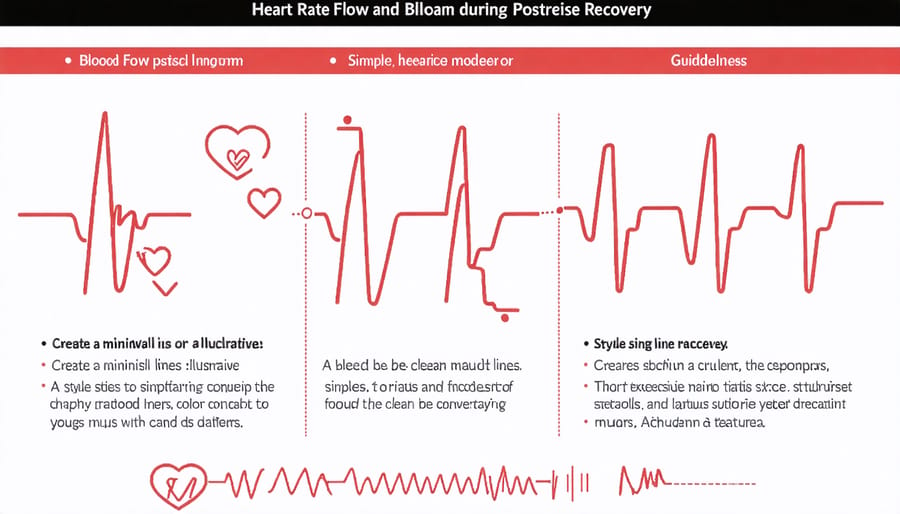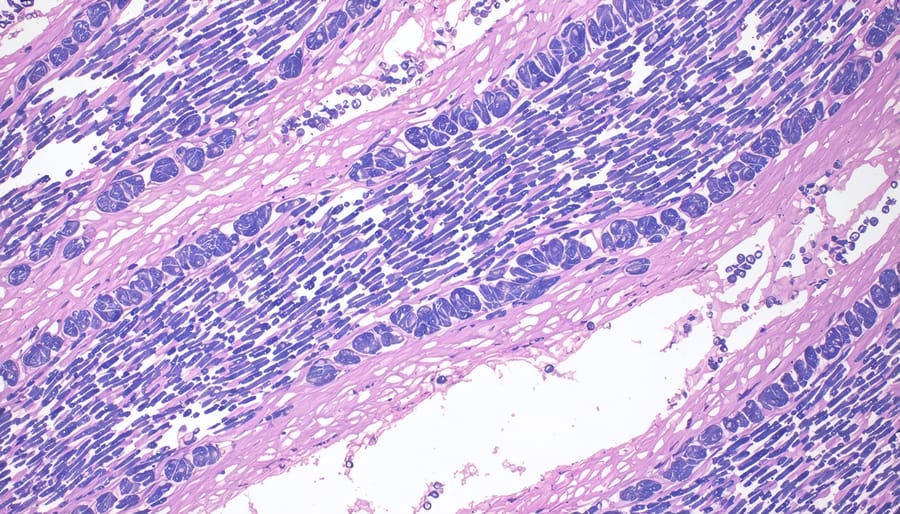Exercise recovery is a fascinating biological symphony that transforms your body from a state of fatigue into a stronger, more resilient version of itself. Within minutes of completing your workout, your body launches an intricate repair process, activating specialized proteins, hormones, and cellular mechanisms to heal damaged tissues and adapt to the physical demands you’ve placed upon it. From repairing microscopic muscle tears to replenishing energy stores and reducing inflammation, these recovery processes work together to not only restore your body but actually improve it. Understanding this remarkable journey of recovery is crucial for anyone looking to maximize their fitness gains, prevent injury, and maintain long-term health. Whether you’re a seasoned athlete or just starting your fitness journey, knowing how your body bounces back after exercise can help you make smarter decisions about training intensity, rest periods, and recovery strategies.
The Immediate Post-Exercise Response
Heart Rate and Blood Flow Recovery
After intense exercise, your heart rate and blood flow gradually return to their resting states through a process called cardiovascular recovery. During exercise, your heart pumps faster and harder to deliver oxygen-rich blood to working muscles. As you begin to cool down, your body recognizes that the intense demand for oxygen has decreased.
This recovery process typically occurs in two phases. The first phase happens within minutes of stopping exercise, where your heart rate drops significantly – this is called the rapid recovery phase. The second phase is more gradual, taking anywhere from 15 to 60 minutes for your heart rate to return to its resting state.
Blood flow also shifts during recovery. During exercise, blood is primarily directed to your muscles and skin for cooling. As you recover, this blood flow begins to redistribute more evenly throughout your body. Your blood vessels, which dilated during exercise, gradually return to their normal size.
To support healthy cardiovascular recovery, try to include a proper cool-down in your workout routine and stay hydrated. This helps your body transition smoothly from high-intensity activity to rest and reduces the risk of dizziness or light-headedness.

Muscle Tissue Response
When you finish exercising, your muscles immediately begin their recovery process. During this phase, your body works to repair the small tears in muscle fibers that occurred during your workout. These microscopic tears, while normal, trigger an inflammatory response that brings healing nutrients and cells to the affected areas.
Your muscles start to replenish their energy stores, particularly glycogen, which was depleted during exercise. This process requires both glucose and insulin to effectively store new energy for future use. At the same time, protein synthesis increases to rebuild stronger muscle fibers, a process that can continue for up to 48 hours post-exercise.
Blood flow to the exercised muscles remains elevated during this period, helping to remove waste products like lactic acid while delivering oxygen and nutrients needed for repair. This increased circulation also helps reduce muscle soreness and stiffness.
Your body releases various hormones during this time, including growth hormone and testosterone, which play crucial roles in muscle recovery and strengthening. These natural responses help your muscles adapt and become more resilient for future workouts.
The 48-Hour Recovery Window

Protein Synthesis and Muscle Repair
After intense exercise, your body initiates a complex muscle growth process known as protein synthesis. During workouts, your muscle fibers develop tiny tears, and your body responds by activating special cells called satellite cells. These cells rush to the damaged areas and begin repairs, much like a construction crew fixing a building.
The repair process requires adequate protein, which serves as the building blocks for new muscle tissue. Your body breaks down dietary protein into amino acids, which are then transported to your muscles through the bloodstream. This rebuilding phase typically begins within a few hours after exercise and can continue for up to 48 hours.
To support this recovery process, your muscles become more sensitive to nutrients, particularly protein and carbohydrates, in the period following exercise. This increased sensitivity helps your body absorb and utilize these nutrients more effectively, leading to stronger and more resilient muscle tissue.
The intensity of your workout influences how much protein synthesis occurs. More challenging workouts typically trigger a greater repair response, which is why proper nutrition and rest are essential for seeing improvements in strength and endurance. Your body also releases various hormones during this time, including growth hormone and testosterone, which play crucial roles in muscle repair and development.
Energy Store Replenishment
After exercise, your body needs to replenish its energy stores, particularly muscle glycogen, which is the primary fuel source used during workouts. Think of glycogen as your body’s energy savings account – during exercise, you make withdrawals, and afterward, you need to make deposits to maintain a healthy balance.
The restoration of glycogen happens most efficiently within the first 30 minutes after exercise, often called the “recovery window.” During this time, your muscles are especially receptive to absorbing glucose from your bloodstream to rebuild glycogen stores. This process can continue for up to 24 hours post-exercise, depending on the intensity of your workout.
To support optimal glycogen replenishment, focus on consuming carbohydrates soon after exercise. A combination of both simple and complex carbohydrates works best – think of having a piece of fruit along with whole grain toast or oatmeal. Adding a small amount of protein to your post-workout meal can enhance this process by improving the efficiency of glycogen storage.
The amount of carbohydrates needed varies based on your activity level and body size, but generally aim for 0.5-0.7 grams of carbohydrates per pound of body weight within the first few hours after exercise. Staying hydrated also plays a crucial role in this process, as water is necessary for proper glycogen storage.
Supporting Your Body’s Recovery
Nutrition for Recovery
Proper nutrition plays a vital role in your body’s recovery after exercise. The key is to focus on three essential nutrients: protein, carbohydrates, and fluids. Protein helps repair and rebuild muscle tissue that was stressed during exercise, while carbohydrates replenish your energy stores and help transport nutrients to your cells.
Timing is crucial for optimal recovery. Try to consume a balanced meal or snack within 30 minutes after finishing your workout, when your muscles are most receptive to nutrients. This “recovery window” is especially important if you exercise intensely or plan to work out again within 24 hours.
A good post-workout meal should include:
– 15-25 grams of protein (such as Greek yogurt, eggs, or lean meat)
– 30-40 grams of carbohydrates (like whole grain bread, fruits, or sweet potatoes)
– Plenty of water to replace fluids lost through sweat
Remember to continue hydrating throughout the day, aiming for clear or light yellow urine as a sign of good hydration. If you exercised for more than an hour or sweat heavily, consider including electrolytes in your recovery nutrition through sports drinks or natural sources like coconut water and bananas.
For ongoing recovery, maintain a balanced diet rich in whole foods, including plenty of colorful fruits and vegetables that provide antioxidants to help reduce exercise-induced inflammation.

Sleep and Rest
Quality sleep is your body’s prime time for recovery after exercise. During deep sleep, your body releases growth hormone, which plays a crucial role in repairing and building muscle tissue. Aim for 7-9 hours of uninterrupted sleep each night to maximize these recovery benefits.
Rest periods between workouts are equally important. Your muscles need time to repair the microscopic damage caused by exercise, and rushing back into intense activity too soon can impair this process. A good night’s sleep helps reduce inflammation, restore energy levels, and strengthen your immune system.
To improve your sleep quality after exercise, maintain a consistent bedtime routine and avoid intense workouts close to bedtime. The optimal window for exercise is typically 3-4 hours before sleep. Create a cool, dark, and quiet sleeping environment, and consider using relaxation techniques like deep breathing or gentle stretching to help your body transition from activity to rest.
Remember that adequate sleep isn’t just about recovery – it also helps prevent injury and maintains your motivation for future workouts.
Active Recovery Techniques
Active recovery involves light exercises and movements that help your body bounce back after intense workouts. Understanding these active recovery benefits can significantly improve your fitness journey. Start with gentle stretching to maintain flexibility and reduce muscle tension. Light walking or cycling at a comfortable pace helps increase blood flow without adding stress to your body.
Swimming and yoga are excellent recovery activities that promote mobility while being easy on your joints. Foam rolling and self-massage can help release muscle knots and reduce soreness. Aim to keep your heart rate between 30-60% of your maximum during these activities.
Remember to stay hydrated and maintain good posture during recovery exercises. Even household activities like gardening or leisurely bike rides count as active recovery. The key is to keep moving without overtaxing your body. This approach helps maintain fitness levels while giving your muscles the time they need to repair and strengthen.
Understanding how your body recovers after exercise is essential for maintaining a healthy and sustainable fitness routine. As we’ve explored, recovery involves multiple processes, from muscle repair and glycogen replenishment to hormonal balance restoration. By giving your body adequate rest, proper nutrition, and following smart recovery practices, you can maximize the benefits of your workouts while minimizing the risk of injury or burnout.
Remember that recovery isn’t just about resting – it’s an active process that requires attention and care. Focus on getting quality sleep, staying hydrated, eating a balanced diet rich in proteins and complex carbohydrates, and listening to your body’s signals. Whether you’re a beginner or an experienced athlete, incorporating proper recovery techniques into your fitness routine is crucial for long-term success.
Make recovery a priority by scheduling rest days, practicing gentle movement on off days, and maintaining consistent sleep patterns. By respecting your body’s need for recovery, you’ll build a stronger foundation for achieving your fitness goals while supporting your overall health and well-being.

